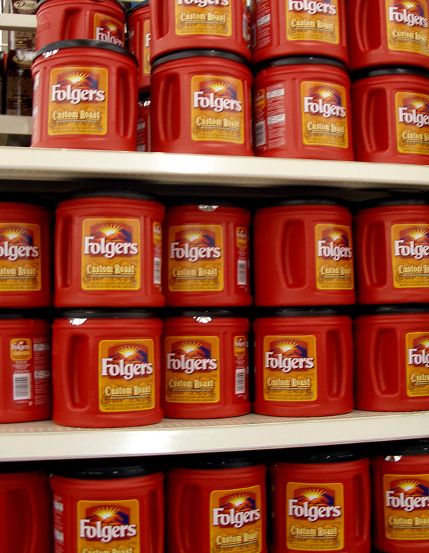
Rant topics come in waves. I have no control over how or when others follow what I’m writing, but when they publish something related, I pounce. We’re bleeding-edge fresh here, so I must respond to ACEEE’s most recent published paper, Reducing Energy Waste through Municipally Led Behavior Change Programs.

This week is not only about behavior, it includes a cornucopia of goodies, like all the Thanksgiving leftovers. At Michaels, we call these goodies, including Jell-O and pie, carefully layered into a repurposed Folgers can, a beloved possum bucket.
Strategic layering is crucial for a successful possum bucket treasure. While sour cream mashed potatoes may seem like a great base, it poses a gagging hazard if left as the bottom layer. There are solutions, but that is off topic. Therefore, we shall focus on the whipped cream – the best stuff, at the top. We shall not put the whipped cream in harm’s way of Jell-O contamination.
Social Interaction is Critical
Some regions of the country are trending toward home energy reports and one-size-fits-all online energy audits (yes, they are one-size-fits-all regardless of the sales person’s script). There are numerous challenges and problems with these compared to in-person audits.
First, there is a lack of reciprocity. If you are a person who wants four samples of beer at a craft brew joint before settling on a pint of Sam Adams, you have no reciprocity. Everyone else will feel some social-norm obligation to do something in return for a free or deeply discounted audit.
Second, online audits are about as opaque as social media where people can bomb away in the safety of their parents’ basement without facing the benefits of a personal confrontation, er interaction. Click the video to the right to see what I mean. That, my friends, is the difference between the online and in-person experience.
Third, nothing stands out today like interacting with a human being to seek help, answer questions, or provide advice. The last thing 99% of companies in the people business, which is all companies, want to do is talk to their customers or prospective customers.
It is so, so, so easy to stand above the crowd, not by having the coolest website or a sassy blog, but by TALKING with inquiring bodies or quickly responding to texts, emails, or chats. Did I mention there is nothing more useless than a FAQ list? They feature the dumbest questions imaginable. Is your computer turned on? I have never found anything but FAQing frustration with FAQs. Useless!
Considerations for Behavior Change
Behavior change is hard. Exercise is no problem for me. I run every day. However, I needlessly go through injurious slumps because I don’t maintain certain stretching and strength regimens – and I run too many miles and never take a day off. Who needs it?!
ACEEE writes about numerous categories of behavior changes and nudges. I can’t resist.
Tap into social norms to become more like the rest of the group. In other words, be normal. Be average. No! Be extraordinary. Besides, an attribution zealot will wipe out any savings associated with rising to mediocrity. Average warrants no trophy, not even a ribbon.
Give feedback with home energy displays to reduce usage. To multiply the impacts of this by 10X, add useful information such as describing big energy loads specific to the home, what to do about them, and set goals!
Leverage influential people to affect change in the organization. Start with the CEO and work your way up for best results.
Solicit commitments (and ban hedging) to create expectations of success. People, including my formal self, are commitment averse, and as such, like to hedge with phrases including, I think, I plan, and I hope when making non-commitments. Get commitments. Ban hedges.
Offer disincentives for uh, unproductive behavior. The last time this worked for me was around 1979. Time out? What is that? Times have changed. Half the workforce has never experienced a penalty. See last week.
Benchmarking Leverage
Benchmarking is to buildings as miles-per-gallon is to automobiles. Benchmarking incites behavior as described by ACEEE.
We explained that home energy reports[1] struggle to gain traction, not only because they are devoid of emotion and have no personality, but because individual homes and their use are very different. These differences largely disappear in the case of commercial real estate.
Are you listening, property managers and owners?
More and more, leasers want efficient, sustainable property for the homes of their employees – where they spend almost as much time as they do in their own bed. Whether or not the city has a benchmarking statute, property-seekers are gaining benchmarking conversance on a level that rivals their familiarity of gas mileage.
Mashed Potatoes
We’ve arrived at the bottom of the possum bucket. Only white paste with embedded residue remains. Let’s recap the themes of possum bucket joy:
- Be a personable, helpful enterprise; not spasmodic, sniping dog
- Communicate early and often
- Penalties drive people away
[1] A form of benchmarking comparing your home to others.






